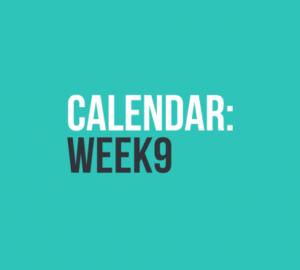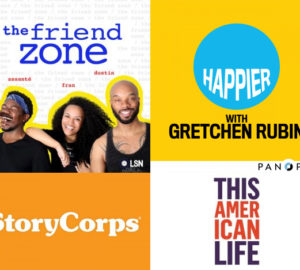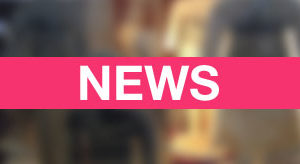Photography professor Kael Alford talks about her adventures in photojournalism
By Brian Steel

Robert Frost once wrote: “Two roads diverged in a wood, and I took the one less traveled by, and that has made all the difference.” That often-quoted verse would be an accurate description of photography professor, Kael Alford. She photographed the fighting in the Balkans, as well as the invasion of Iraq. Alford shares her first-hand perspective on what is going on in Iraq.
What was it like photographing un-embedded?
I could’ve been with the U.S. troops, but I wanted to be on the Iraq side of things. The only way to do that was to not be embedded. It’s just a different physical perspective. The people who were with the U.S. troops weren’t really seeing very much. They weren’t seeing any real fighting. Most of the time they were getting very little perspective on what was going on in Iraq. The only way to get that perspective and that of what it was like for the Iraqis, particularly civilians, was to be in Baghdad. It was like being an Iraqi during the bombing campaign.
I went three times, and each time I went, there was a slightly different situation on the ground. The first time, I was there for three weeks before the bombing started and that was like living under Saddam’s regime in a real heightened state of anxiety, because they were expecting a war to start. After that, there was a three-week bombing campaign and after that, there was utter chaos, because the military disappeared and the authorities in Iraq had a temporary meltdown. There was no authority. For the period after the Americans arrived, there was a power vacuum.
Can you describe what the people on the street were like right after the invasion?
They were dazed. First of all, they had just been bombed with incredible amounts of ammunition and firepower for three weeks. Then, there had been some skirmishes around the city between the Americans and the remaining Iraqi holdouts. Then they didn’t know what to expect next. They didn’t know what was going on. I think it took people a while to believe that it was safe to talk about Saddam. These were people who would not even utter the name of their president for the entire time that he was in power. For decades, they had been accustomed to a repressive authoritarian state, and they just didn’t know initially if that state was gone.
They were really skittish about having the Americans around initially to some extent because they were armed and a little bit jumpy. It was a strange time. I don’t think anyone knew how to act. During that little period, just after the regime melted away, people organized themselves. They were organized into
neighborhood protection groups.
They would set up checkpoints outside their neighborhoods and keep looters out of the residential neighborhoods. Surprisingly, mosques stepped in and filled the void in social services. They would intercept looting civilians and they would bring the stolen goods to the mosque for redistribution. The mosque became a point of redistribution and social services while there was this void of power. People had nowhere to go to get treated, so sometimes the Americans would set up little make shift medical checkpoints or camps. People were bringing them in injured; civilians and injured kids.
The hospitals had been so badly looted there were no more medical supplies or beds to put people in. That happened right after the invasion. It was a chaotic time and people were trying as best as they could to cope and organize and maintain some sort of order. That worked for a little while, until the militias began to organize and stepped in to fill the void.
Can you describe how you were able to photograph with the Madhi militia?
The Madhi army militia developed slowly over several months beginning around the end of 2003. By the time I encountered them, they were pretty well organized. They already had press liaisons that would deal with the media. You could go to an office and make an appointment to speak to a spokesperson. You were supposed to actually get cleared through that spokesperson to work in any Madhi army controlled neighborhoods. I sort of worked with a soldier who was a self-proclaimed media liaison during a time where the organization was quite centrally controlled yet, so I was able to work in neighborhoods that he controlled. He often made introductions for me to other important people, and we moved around the Madhi army held territories. At that time it was more like a neighborhood vigilantly group. I worked with this one particular fixer, until I went to Najaf.
What was their mission?
Their mission was to gain some political power for the constituency of their leader Muqtada al-Sadr. He
is a cleric who has ties to a long-standing tradition of resistance against the Iraqi government. These were
people the United States would have funded in other times. In 1991, they would have been encouraged to over throw the Iraqi government, and really would have taken control. Which is eventually what happened, when we overthrew the government, and then they stepped in and filled the power vacuum.
Their agenda on a larger scale was to take some sort of political leadership in the country, and now they are actually a party in the Iraqi parliament. Leading up to that time, their goal was to gain popularity by policing neighborhoods, and enforcing a form of vigilantly justice in places where they worked. Sometimes it made them popular, and other times it made them unpopular depending on how fairly they matted out their justice. Sometimes they would seize markets where they were selling alcohol and beat the shop owners and put them in makeshift prisons and rough them up a lot. They were by no means always the friendliest, or most reasonable, people to be under, but their neighborhoods for a long time were generally free of car bombings, kidnappings, and other kinds of random violence that was happening in other parts of the city, so they were gaining a constituency in part that way.
I read that they were very conservative when it came to women’s roles. Did make it harder for you to work with them?
They were pretty tolerant with working with me. I was never banded from any particular situation. In mosques, I can only go to the women’s area of the mosque, but other than that, I just maintained the
basic standards that they expect. If I’m in one of their holiest shrines, I need to dress in a conservative way that is appropriate to them. Which seems reasonable to me; I don’t go to church in my bikini. I tried to be respectful in that way and that always seemed to be enough. I always feel that if I can show a certain amount of respect for people, it gets me greater access, and I get a certain amount of respect back, but they didn’t ever give me any problems. I do know journalists who had problems with them. Not just women, but journalists in general who were trying to work within their territories without the correct permission, or they were suspicious of them. They detained them or stuffed them in trunks of cars. They weren’t always so friendly.
As a documentary photographer, what are some of the things that you do to build a rapport with your subjects?
I mostly just try and spend as much time as I can and be interested. I interview people and spend time with them when I am not working and try to see what their lives are like. I try to learn about more than just the immediate story. I try to learn about the story in a broader context. I think that makes me a better reporter and it helps my subjects know that I am not just some reporter looking for a sensational story of the moment that my readers will take out of context. I really try to put the reporting that I do in a broader context that helps to bridge gaps between understanding different cultures and situations. I try to explain that to the people that I work with. I think that is the best kind of rapport that you can build, because it is built on trust and understanding.






















